AimlessWanderer
Remember to forget me!
I'm not talking about having broken a knife, or used it till the backspring, lock, or pivot failed, but used it and sharpened it so much, that the blade is a mere remnant of what it once was. Most of my knives look like they've barely been sharpened.
For example...
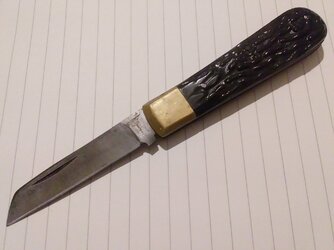
I got this knife about 30 years ago. Now, I have carried many different pocket knives over that time, not just this one. Neither has it been an all day, every day, hard working tool. It has been a much carried and much used companion though, albeit on light urban pocket knife duty, and over all the times I've sharpened it, it's probably only knocked the edge back about 2mm or so. I did eventually have to deepen the relief notch next to the kick a little bit though.
However, I've seen a lot of older knives, where literally half the blade has been sharpened away. Granted, I very often get away with just "steeling" (straightening) an edge rather than having to remove metal, and I will always remove the absolute bare minimum when it does have to visit a stone. So are those old knives getting "touched up" on bench grinders, or does anyone here have (had?) knives that they've actually worn the blade out on, despite conservative sharpening methods?
For example...

I got this knife about 30 years ago. Now, I have carried many different pocket knives over that time, not just this one. Neither has it been an all day, every day, hard working tool. It has been a much carried and much used companion though, albeit on light urban pocket knife duty, and over all the times I've sharpened it, it's probably only knocked the edge back about 2mm or so. I did eventually have to deepen the relief notch next to the kick a little bit though.
However, I've seen a lot of older knives, where literally half the blade has been sharpened away. Granted, I very often get away with just "steeling" (straightening) an edge rather than having to remove metal, and I will always remove the absolute bare minimum when it does have to visit a stone. So are those old knives getting "touched up" on bench grinders, or does anyone here have (had?) knives that they've actually worn the blade out on, despite conservative sharpening methods?



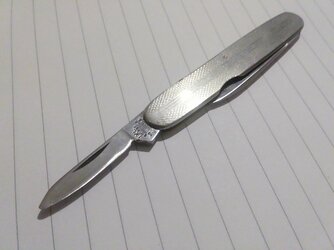
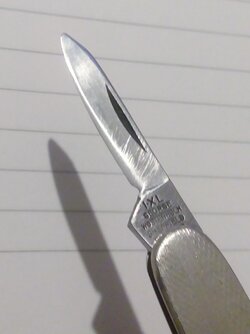
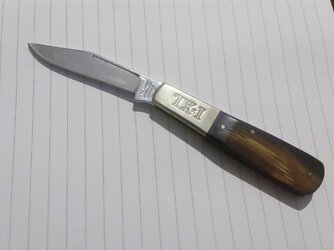
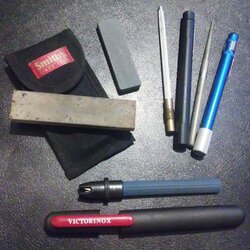

 .
.